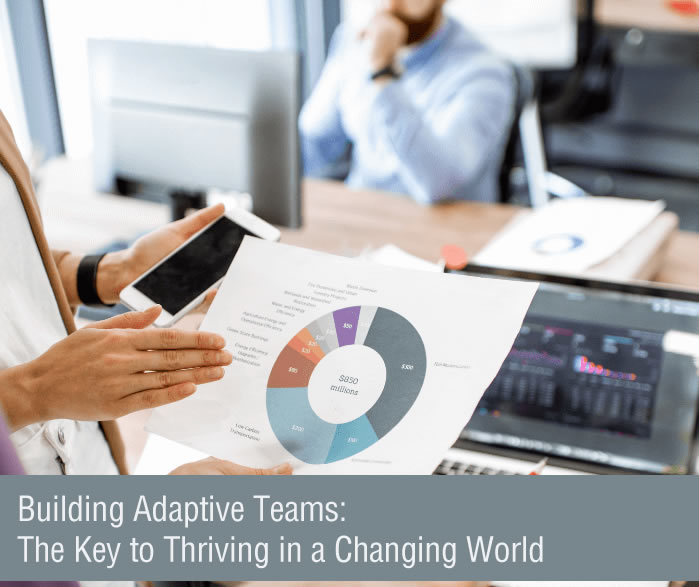Building Adaptive Teams: The Key to Thriving in a Changing World

In a world where change is constant—driven by technology, market shifts, and global events—the most successful organizations aren’t just fast or smart. They’re adaptive.
Today, whether you’re running a startup in San Francisco, managing a healthcare unit in San Diego, or leading a government agency in Sacramento, building adaptive teams is no longer optional. It’s essential.
What Is an Adaptive Team?
An adaptive team is one that can pivot quickly, respond to change, and solve problems collaboratively—even in uncertain or high-pressure situations. These teams don’t just survive disruption—they leverage it for innovation and growth.
The Characteristics of Adaptive Teams
Building a team that can adapt doesn’t happen by accident. It requires intentional effort and leadership. Here are the key qualities found in adaptive teams:
1. Psychological Safety
Team members feel safe to speak up, ask questions, and admit mistakes. This openness fosters faster learning and quicker problem-solving.
2. Shared Purpose
An adaptive team understands why they do what they do. A clear, shared purpose helps members stay focused, even when the “how” must change.
3. Diverse Perspectives
Diversity—in background, thinking style, and experience—leads to better decisions. Adaptive teams welcome different views and use them to challenge assumptions.
4. Collaborative Mindset
Members work with, not just alongside, each other. They trust one another, communicate effectively, and rely on each other’s strengths.
5. Continuous Learning
Adaptive teams are always evolving. They seek feedback, reflect on outcomes, and aren’t afraid to experiment or try new approaches.
How to Build an Adaptive Team
If you’re a leader aiming to build adaptability into your team culture, here’s how to get started:
1. Hire for Agility
Look beyond technical skills. Seek candidates who demonstrate flexibility, curiosity, and a growth mindset.
2. Model Adaptability
Leaders set the tone. Show openness to change, admit when you’re wrong, and lead by example when navigating uncertainty.
3. Encourage Experimentation
Create a culture where trial and error is not punished, but encouraged. Innovation happens when people are free to test ideas and learn from failure.
4. Invest in Cross-Training
Help your team develop a variety of skills so they can step into new roles or take on challenges as needs shift.
5. Hold Regular Retrospectives
Make it routine to pause, reflect, and ask: What’s working? What’s not? What should we do differently? This builds awareness and resilience.
Why This Matters More Than Ever
- Remote work requires flexibility in communication and task management.
- Market volatility demands rapid response to changing customer needs.
- Technological disruption means skills and processes must constantly evolve.
- Crisis readiness—from economic downturns to climate events—requires teams that can stay calm and focused under pressure.
“It’s not the strongest or the most intelligent who survive, but those who can best manage change.” — Adapted from Charles Darwin
In today’s world, team adaptability is a competitive edge. It fosters innovation, reduces risk, and empowers your people to grow.
So if you’re building a team for today—and tomorrow—don’t just ask if they can do the job. Ask: Can they adapt when everything changes?